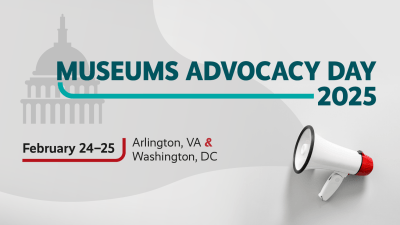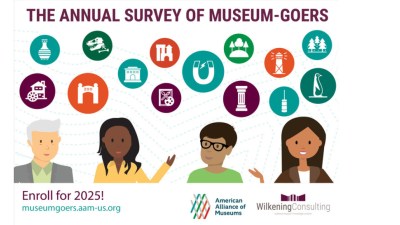
Support Free COVID-19 Resources for the Field:
The current crisis is taking a distressing financial toll on cultural organizations, and AAM is no different. In these challenging times, we ask that if you can, consider supporting our advocacy work and making extensive COVID-19 resources freely available for our field, by making a donation or becoming a member of AAM. Thank you for your much-needed support.
At this moment, many cultural institutions across the country are either beginning to reopen or developing a plan to do so. Although this will certainly be a challenging task, it should be viewed as an opportunity to get it right when the doors are reopened to employees and guests.
To help inform these plans, the CDC has issued guidelines for a three-phased approach to “Opening Up America Again,” with physical distancing protocols that decrease in intensity with each phase. Here are some security and operational recommendations that may help cultural institutions during the planning and implementation process.
Protecting Staff and Visitors
The main goal of your plan should be to protect your staff’s health and safety. Follow the CDC guidelines of all phases for employers, which include developing and implementing appropriate policies regarding physical distancing, personal protective equipment, temperature checks, sanitation, and disinfection of common and high-traffic areas.
Skip over related stories to continue reading articleWhen it comes to protecting visitors, cultural institution operators know their unique environment best, and this is where their expertise will pay huge dividends. In preparation for guests to enter your facility, ask yourself, “What are the vulnerable areas that require special attention before guests arrive?” These will include queuing systems, entrances and exits, restrooms, elevators, security screening areas, guest services locations (i.e., information desk, coat check, or lost and found), atriums, ticket counters, gift shops, restaurants, ATMs, doors to galleries, theaters, lobbies, and maps and brochures, among others.
Start identifying all the COVID-19-vulnerable areas at your facility and develop a plan for each. Do not forget the “security” infrastructure of your facility (i.e., the physical, technical, and operational security measures) utilized to keep the facility safe and secure.
In addition, consider offering your guests masks and gloves as they enter the facility.
Crowd Control
The concept of virtual queuing—getting people into venues based on time, location, size of party, etc.—is starting to gain traction. So, too, is Radio Frequency Identification (RFID) tracking, where guests wear bracelets that report on their contacts and spacing from others. That data can then be used to support contact tracing. Technological solutions and procedures like these could be the wave of the future and should be considered with any ticketing strategy.
The positive use of technology to enable confidence in the public is key to a successful return to “normalcy.” In addition to virtual queuing and contact tracing, temperature screening, PPE use, sanitizing stations upon entry, health questionnaires, and software analytics tied to existing security surveillance systems will help facilities maintain a safe environment.
Lastly, bag checks and control may need to evolve into a system similar to professional sports, where clear bags are encouraged to avoid any handling of contents. Of course, patrons with special needs will be screened to facilitate entry.
Enforcing Hygiene and Distancing Policies
The current thought is that people going to public events will need 9 x 4 feet or 36 square feet distancing per person while queuing. It may become the new norm that individuals are required to fill out health questionnaires to enter a venue or event, to alleviate the venue’s responsibility. Safe harbors for venue operators and owners are going to be a key issue. Look into the Public Readiness and Emergency Preparedness (PREP) Act, which is similar to the Safety Act after 9/11.
Sanitation stations inside the facility will also grow in quantity, and it is possible UV light can be installed in public bathrooms as an added layer of protection. Building Management System (BMS) monitoring, including improved air filtration and UV lighting on HVAC coils to eliminate germs, may also be considered.
To help offset some of the costs of these measures, operators should look into the Coronavirus Emergency Supplemental Funding (CESF) program, which will provide funding to assist eligible states, local units of government, and tribes in preventing, preparing for and responding to the coronavirus. Allowable projects and purchases include, but are not limited to, overtime, equipment (including law enforcement and medical personal protective equipment), hiring, supplies (such as gloves, masks, sanitizer), training, and related travel expenses.
Encountering Resistance to Policies
There is no doubt that resistance from guests will happen. It will need to be addressed with clear policies and procedures for entrance, signage, and backing from local and state governments.
Museum professionals will be dealing with these issues to a greater degree than before upon reopening. Staff need to have a clear understanding of the crisis, planned procedures, and how all these ideas can be implemented to create the best possible experience for guests in this “new normal.” Webinars, ongoing training, and following industry lessons learned as we go along will be key to successful re-openings. This will take imagination and creativity in some cases. Proactive leadership is a must.
If you protect and treat your guests right, they won’t forget. People will most likely talk about this COVID-19 period for the rest of their lives. When visitors arrive again and see the precautions you’ve taken with your employees and infrastructure, it will be evident that your institution planned for success and safety.
About the authors:
Darrell Utt is the Operational Security Lead in the Protective Design and Security practice in the Washington, D.C. office of Thornton Tomasetti. He is responsible for planning, coordinating, resourcing, and building operational/technical security services across a range of project types. He previously served as Director of Security and Director of Operations at the Museum of the Bible in Washington, D.C., and is a retired U.S. Army Special Forces Operator (Green Beret).
Bill Edwards is an Associate Principal in the Protective Design and Security practice at Thornton Tomasetti. Bill and his team are experts in counterterrorism, counter-theft, cybersecurity, electronic security, and physical security; and provide customized solutions to protect clients’ critical assets and investments. He is based in the firm’s Denver office.






“The current thought is that people going to public events will need 9 x 4 feet or 36 square feet distancing per person while queuing.” What is the thinking behind this? I’ve seen either 6′ radius circle and 6’x6′ square (which, of course, yields 36′ sq. anyway). But where does 9 x 4 feet come from.